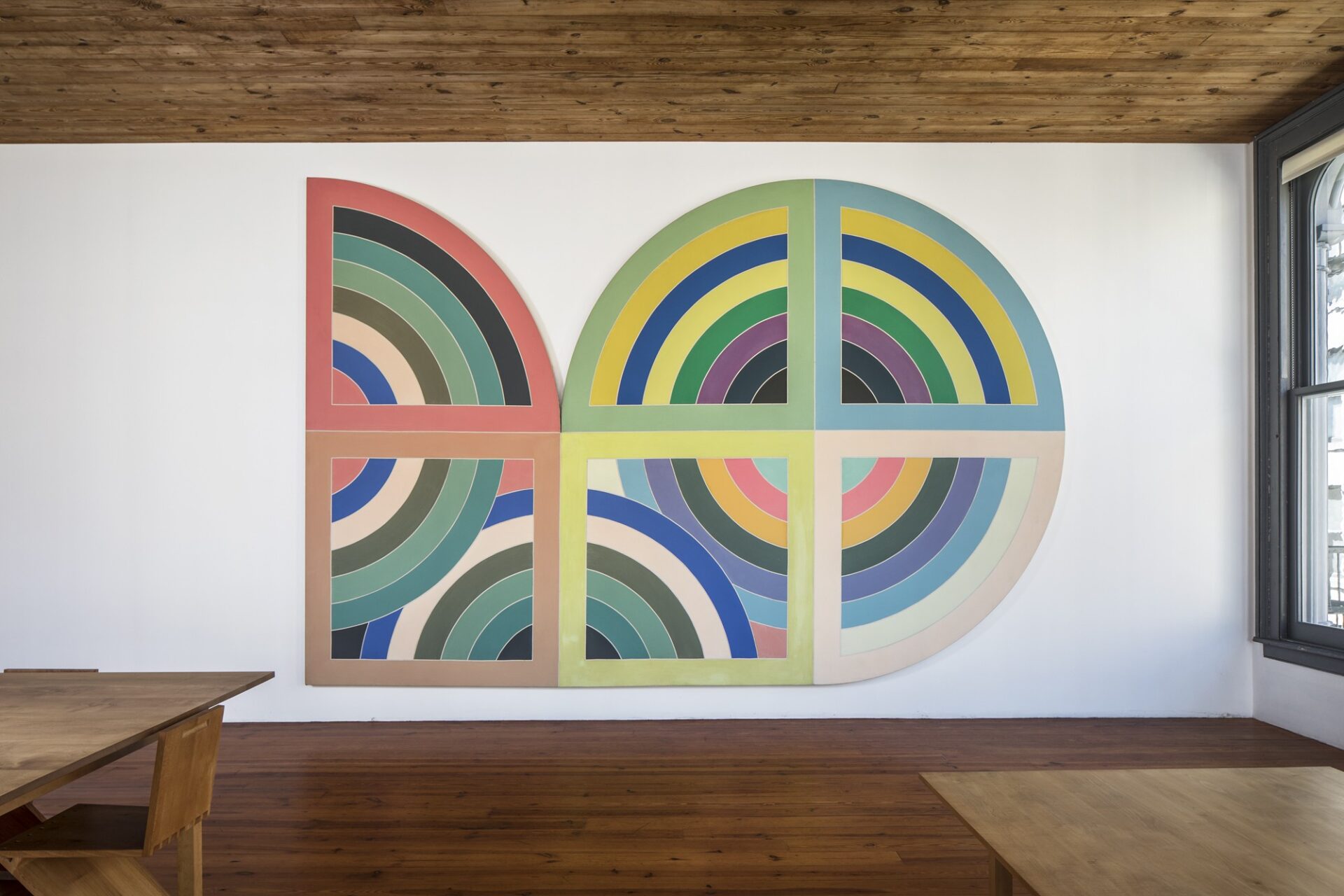Donald Judd first exhibited with Frank Stella in Contemporary American Group Show [New Work: Part III] (May–June 15, 1963) at Green Gallery in New York. In his 1962 review of Stella’s solo exhibition at Leo Castelli Gallery, Judd wrote “Criticism is pretty much after the fact. Frank Stella’s paintings are one of the recent facts. They show the extent of what can be done now. The further coherence supersedes older forms.”1
Gur II is part of Stella’s “Protractor” series, produced between 1967 and 1971. The paintings are, according to William S. Rubin, “quasi-architectural” in both size and scale, with thinly applied acrylic paint extending to the edges of the canvas.2 Stella said in a 1966 interview that “spanning the entire surface produces an effect of change of scale—the painting is more on the surface, there is less depth. And the picture seems bigger because it doesn’t recede in certain ways or fade at the edge.”3 Using the semicircle as the series’ basic compositional element, Stella conceived of thirty-one unique forms named after ancient circular cities or gated precincts in Asia Minor (such as Gur, an ancient city located in present-day Iran), where the painter had traveled in 1963. These configurations were to be realized using each of three different design motifs designated by a Roman numeral at the end of a work’s title: “interlaces” (I), “rainbows” (II), and “fans” (III).
In a 1962 essay, Judd noted that “several . . . artists have invented elements which might be considered an advance beyond the earlier abstraction; Frank Stella, for example, has made something new of geometric painting, made it more concrete and increased its scale.”4
